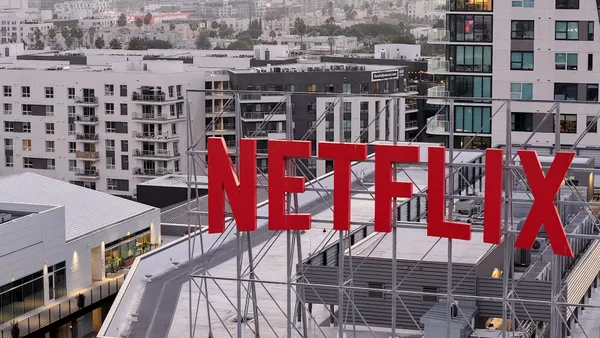The following is a guest post from Marc Guldimann, co-founder and CEO of Parsec Media.
The hype around blockchain in digital media has finally cooled. Crypto prices are off by 90%. The SEC has started going after companies that created their own currencies. There's been substantial restructuring at blockchain firms, and the headiest thinker in the space returned to his post at a more traditional media company.
All of this was bound to happen. Last year's wave of fantastical predictions on the impact blockchains will have on digital media was a washout.
Now it's time to look realistically at what blockchain can do for the industry. Before getting started, it's important to level-set on what we're talking about. Blockchains are just slow databases with one very interesting feature: They let parties directly append data to their own records, subject to certain unchangeable rules. Because of this feature, blockchains are expensive to set up and run. Avoiding contention, ensuring authenticity and creating consensus without centralized authority is hard. The difficulty might be worthwhile only in cases where autonomy and sovereignty of data is valuable, such as money and other records of asset ownership. By empowering individuals to reach consensus of ownership by themselves, blockchains can remove middlemen who might optimize a market to their own benefit over time.
Most implementations of blockchain in digital media don't take advantage of data sovereignty or decentralization. Vendors are promising to detect fraud or report take rates with the world's slowest database. That's technically doable, but there's no real business case to support the effort. For most of the challenges blockchain aims to address, marketers would be better off with a standard database on Amazon Web Services.
That said, using blockchain for trading and recording asset ownership in a decentralized market still represents a massive opportunity for the ad industry. Specifically, the market for direct advertiser-publisher contracts could become much more efficient and innovative.
It's easier to see once you consider:
- The success of Bitcoin proved there's value for people in transferring assets without a middleman.
- Ethereum and other second-wave blockchains added functionality, specifically applying logic to value distribution, ultimately allowing software to control the flows of money and the creation of financial products that operate without middlemen. This is sometimes called "defi" for decentralized finance.
- The creation of digital assets puts the trading and ownership of commodities, securities and other things on a blockchain, allowing ownership to be swapped directly between parties. You'll see these referred to as "security tokens."
The financial services industry has figured out that blockchains are a powerful tool for transaction settlement. Digital Asset's project with ASX, for example, was all about moving its settlement function to a distributed ledger. With blockchain, settlement is instant and certain, without a middleman.
A good model for advertising's potential is the London Bullion Market Association. It serialized bars of gold and tied tokens to specific bars. The gold tokens behave like a typical digital asset, making it more efficient to settle trades between members. Yet, of course, putting literal gold bars on a blockchain highlights an interesting limitation of digital assets: custody. The owner of a digital asset that represents a bar of gold may be able to trade it freely, but they still have to trust the person with the keys to the vault.
For the advertising industry to settle transactions via a blockchain, first it must create a digital version of the asset being traded, as the London Bullion Market Association did. Tokenization is tricky because it requires a consistent measure of value for each token. Unfortunately, in display advertising we typically use impressions, a measure of value about as accurate as one "nugget" of gold. Some digital ad platforms are innovating attention metrics that are more suitable for tokenization, including Google's TrueView and Fox's True[X].
The biggest improvement that blockchain brings to digital advertising might be adoption of media metrics that are stable and trustworthy enough to denominate securities. Not everyone realizes that our marketplace is hamstrung by vague, inflatable valuation metrics that force buyers and sellers into an inefficient spot market. It's only when comparing media to other financial assets that this becomes clear.
Over-the-top (OTT) metrics are relatively consistent — a full screen for a fixed duration. So, contracts for OTT media could be a good place to see how blockchains could be used in digital advertising. A blockchain OTT marketplace can be described in three phases:
- Testing measurement, clearing and settlement: Digital assets would be created as upfront contracts or I/Os are signed. These assets would be distributed to the media buyer and put at stake as the campaign starts. All assets would be campaign-specific, with resale forbidden. Obligations would be reduced as delivery is confirmed by verification vendors acting as oracles. Verification could include NHT, audience, context or geo — pretty much any targeting parameter.
- Fungible assets: The next step would be publishers selling digital assets that represent agreements to buy media that are tradeable. This creates a powerful financial tool for publishers — securitization of future media sales. Ownership of the assets could be recorded on a distributed ledger and redemption managed the same as in step one, with two caveats: content controls and targeting. Since the assets can be traded, publishers need editorial control of what ads can run while still providing value to the asset holder, something that could be handled by a list of permitted advertisers associated with every contract. Targeting should be used sparingly as it reduces liquidity.
- Financialization of media: Once the non-trivial problems of content controls and targeting are addressed, it gets interesting. The futures contracts sold by publishers have a spot price that can serve as a foundation for more exotic financial products like options.
This process would create a decentralized and far more liquid marketplace for media, with fewer middlemen between media owners and marketers, and the transparency that comes along with creating verifiable assets. That's the true power of blockchain: creating efficient, decentralized marketplaces. This is where the digital media industry should set its focus.











